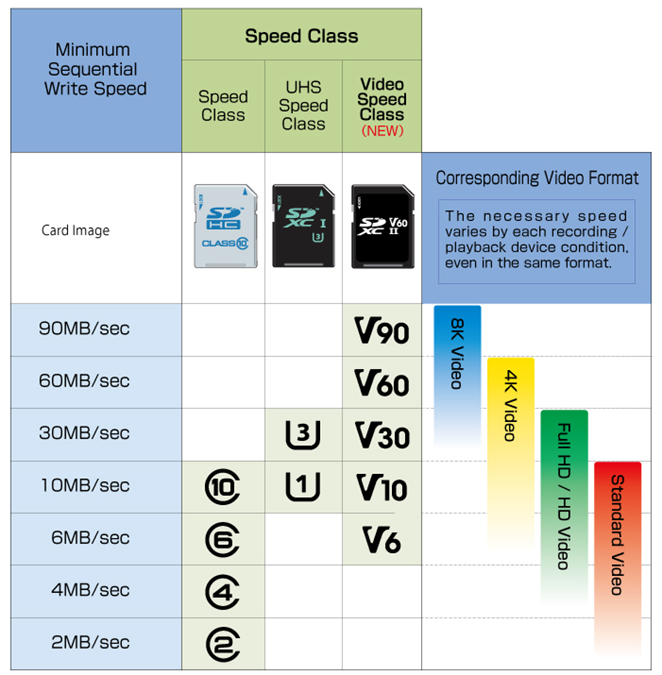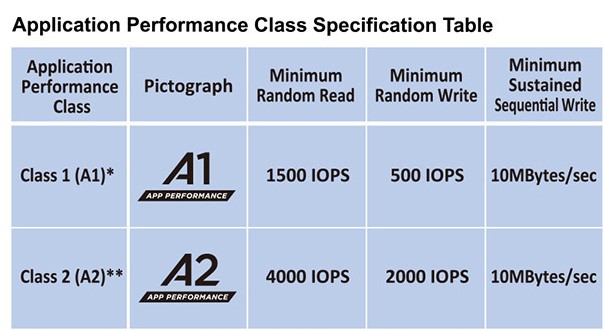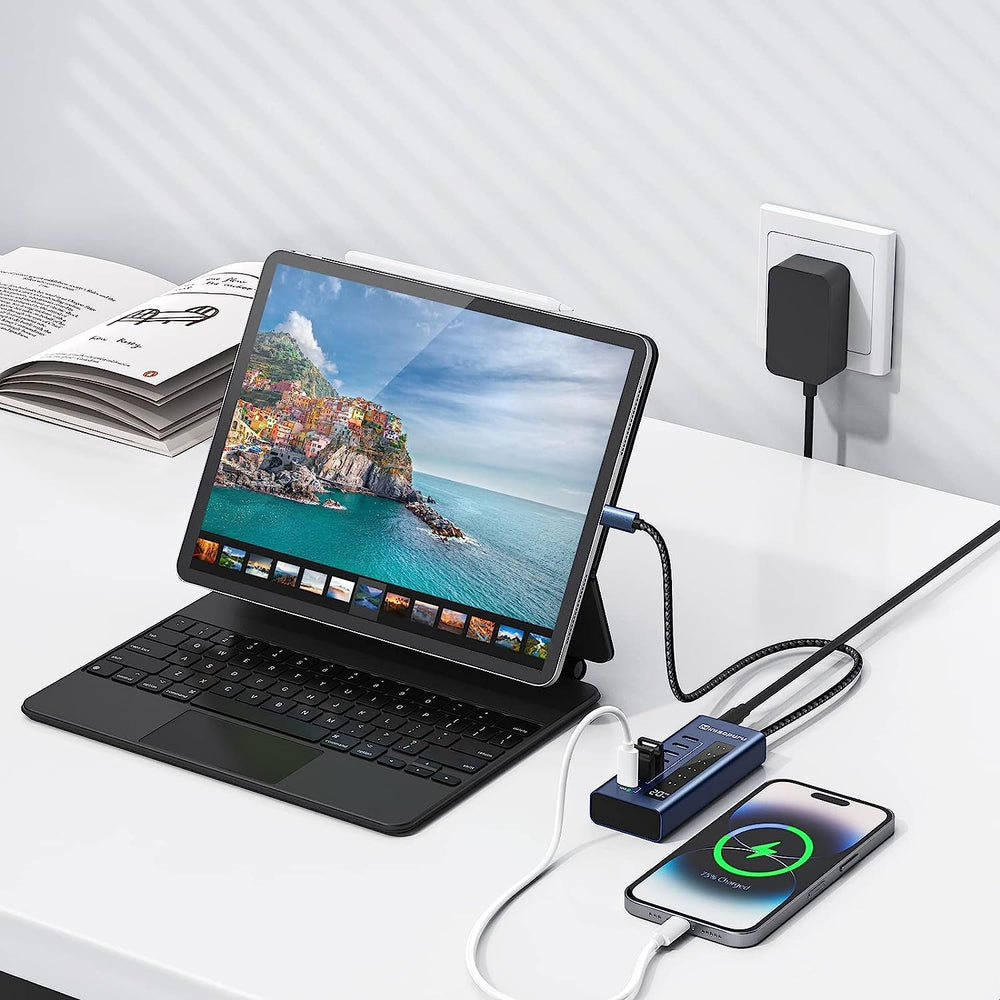Every year, our connected lives are filled with newer, more exciting technology. Cameras are getting smaller and higher resolution, phones are moving to flip, bendable screens, and the amount of content we store is growing. All of these devices we use require some kind of storage to hold this information. You can think of storage like tires - you might have an exotic sports car that can go 300 mph, but if your tires are only rated for 80 mph, then that's the fastest you can go.
Storage is an essential feature of the devices we rely on every day. So why would you buy an SD memory card without knowing what the various speed ratings mean and what the best uses for each speed rating are? Choosing the right SD memory card for a specific application or device is key to getting the most out of the card and ensuring you don't buy a card that doesn't use its full potential.
Ratings Overview
We mentioned Speed Class before in SD memory card ratings. Consumers often reference maximum speeds when weighing product options, but they should be more concerned with minimum sustained speeds—in other words, the slowest speed an SD card can write to while maintaining its performance.
To better help consumers understand a card's capabilities, the SD Association (SDA) assigns four ratings to performance: Speed Class, UHS Speed Class, Video Speed Class and Application Performance Class. For most modern applications, consumers will interact with the last three ratings, UHS Speed Class, Video Speed Class, and Application Performance Class.
UHS Speed Class is only available for UHS-equipped devices and specifies the minimum write performance for recording video on a UHS card. UHS Speed Class 1 for UHS-I/UHS-II allows for file transfer rates of 10 megabytes per second (MB/s), which is equivalent to the minimum sustained speed of Speed Class 10, but can support higher maximum speeds if the host device supports UHS-I. UHS-I allows your card to reach higher peak speeds, giving you higher definition videos and photos.
Video Speed Class is another option that will eventually replace current card ratings. Video Speed Class has a range of performance ratings, defined primarily by the card's minimum sustained transfer speed (MB/s, the number after the V), including V6, V10, V30, V60, and V90. Cameras with 4K video recording capabilities may use UHS Speed Class U3 or V30-V90.
While many cameras can shoot 4K content with a V30 card, you may need a faster card if you shoot at higher frame rates (60-120fps). Always match the SD memory card to the requirements of your device or application.

New App Performance Classes
While Speed and Video Classes are exciting for content creation, SDA’s newly developed Application Performance Classes will impact more consumers. App Performance Classes (A1/A2) are extremely useful for products like Android™ phones and tablets.
The introduction of Android’s Adopt Storage feature means consumers can use microSD memory cards to expand the capabilities of their device’s built-in storage. Previously, Android phones could only use external storage to move or read existing content. For example, you could watch a movie stored on the card, or move photos from the phone to the card to free up storage space. But with the new App Performance Classes, you can record directly to the card and run apps or games stored on the card.
There’s a big difference between the other Speed Classes and App Performance Classes. Previously, we only considered sequential speeds (10MB/s, 30MB/s, etc.), which worked well in devices that required steady file transfers, like cameras. However, products like phones and tablets have operating systems and record data at random intervals, which affects input/output per second (IOPS). IOPS plays a big role in making storage feel fast. Consumers who switch from spinning hard drives to SSDs will notice that everything feels a lot faster due to the increase in IOPS.

SD Express and the Future of SD Memory Cards
Over the past two decades, digital imaging technology has continued to push the number of pixels we create and consume. First, we jumped from standard definition to 720P, and then from 720P to Full HD 1080P, 2K, and 4K. We're even seeing 8K TVs appear on the market now. Content creators are always in need of capturing footage at higher resolutions and faster frame rates, with greater color depth information to future-proof their media. You'll even see some major online streaming platforms transition to 12K cameras with HDR color information to stay ahead of the curve.
To help you keep up with these evolving trends, the SDA developed the SD Express standard. It's based on the PCIe and NVMe interfaces and offers faster sequential read and write transfer speeds, ranging from 985 MB/s to nearly 4 GB/s. This new standard is faster than the SATA-based SSDs in today's PCs, but in the same convenient form factor as traditional SD memory cards. In fact, it’s even backwards compatible with older SD host devices via the traditional SD UHS-I interface, with speeds up to 104MB/s. You can learn more about SD Express and keep an eye out for new cards and products that support SD Express by watching this short video from SDA.

